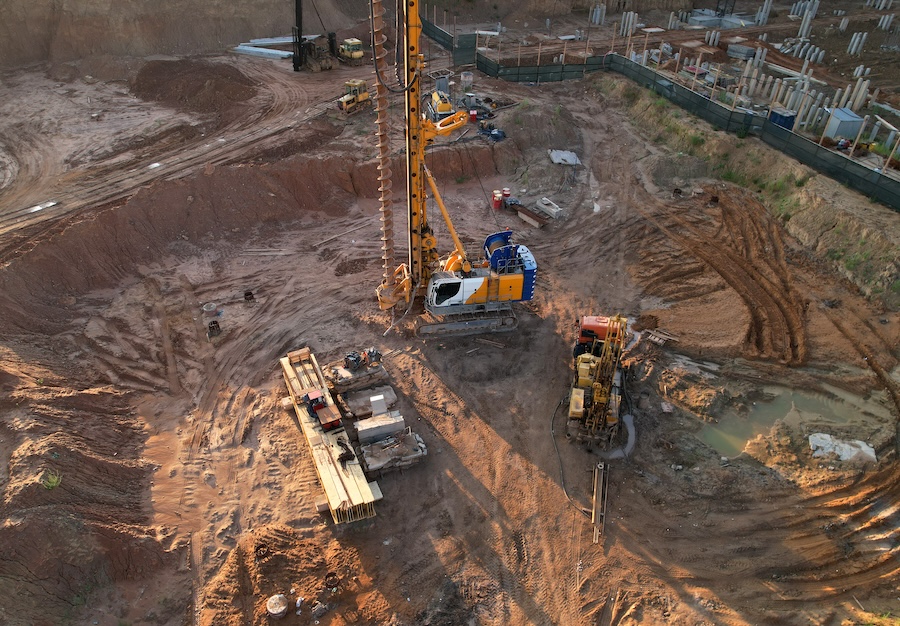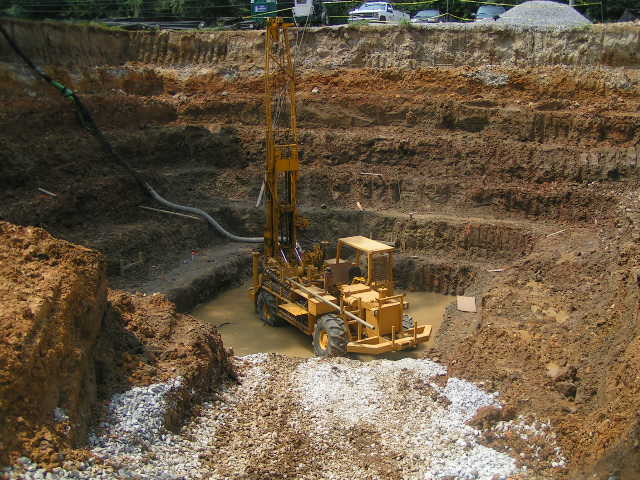The Function of an Engineer of Record in Ensuring Structural Stability and Conformity
The Function of an Engineer of Record in Ensuring Structural Stability and Conformity
Blog Article
The Value of Dirt Analysis and Website Investigation in the Geotechnical Market: Ensuring Security and Stability in Civil Engineering
In the geotechnical market, soil analysis and website investigation are foundational elements that underpin the security and stability of civil design jobs. These processes not just reveal the features of subsurface materials however likewise educate important decisions pertaining to layout and construction methods. By extensively recognizing soil buildings, engineers can preemptively attend to possible obstacles, eventually safeguarding architectural honesty. However, the implications of these examinations expand beyond instant project success; they can influence lasting sustainability and durability (engineer of record). As we discover the intricacies of these practices, it comes to be obvious that their significance can not be overemphasized.
Recognizing Soil Characteristics
In the realm of geotechnical design, an extensive understanding of soil residential properties is paramount for educated decision-making and efficient task style. The characterization of soil includes the evaluation of numerous physical and mechanical buildings, such as grain dimension distribution, plasticity, shear, cohesion, and permeability toughness. These residential properties determine how soil acts under various loading conditions and environmental impacts, making them essential for examining site suitability for building and construction projects.
Soil classification systems, such as the Unified Soil Category System (USCS) and the AASHTO category, give frameworks for grouping soils based upon their qualities. This category help designers in predicting habits under stress, water flow, and settlement, consequently affecting design options and construction methods.
Moreover, the interaction in between soil and bordering structures is a crucial factor to consider in geotechnical engineering. Comprehending soil homes assists determine possible difficulties, such as liquefaction in earthquake-prone locations or too much negotiation in soft soils. By thoroughly evaluating these buildings, geotechnical designers can ensure the security, security, and longevity of structures, ultimately contributing to the total resilience of civil engineering jobs.
Techniques of Soil Analysis

In-situ examinations consist of methods such as Conventional Penetration Examinations (SPT), Cone Penetration Tests (CPT), and vane shear tests. SPT reviews the resistance of dirt to penetration, supplying information on thickness and toughness, while CPT gauges dirt resistance and pore pressure, producing constant profiles of dirt stratigraphy. Vane shear examinations are especially beneficial for analyzing the shear stamina of cohesive dirts.
Lab tests match these in-situ analyses and include sampling soil for controlled screening. Typical laboratory techniques consist of Atterberg limits, which figure out the plasticity qualities of fine-grained dirts, and compaction tests, which evaluate moisture-density connections. Extra tests, such as triaxial compression and unconfined compression examinations, are conducted to assess the shear stamina of dirt samples under numerous conditions.
Function of Website Examination
Site examination plays an essential function in the geotechnical engineering process, working as the structure for understanding subsurface conditions. This extensive evaluation includes organized expedition of soil and rock buildings, groundwater levels, and other geological features that affect job safety and security and security.
Usually, site examinations incorporate a selection of strategies, consisting of boring boreholes, tasting, and in-situ testing. These techniques click here to find out more give vital information on the mechanical and physical qualities of the ground, notifying engineers about prospective challenges such as dirt negotiation, bearing capability, and incline stability.
Furthermore, site investigation helps with the recognition of harmful products and impurities, making it possible for the implementation of suitable removal procedures. By establishing an exact subsurface profile, site examinations assist to alleviate risks related to building, guaranteeing that tasks comply with safety and security standards and laws.
The findings from an extensive site examination not just guide design decisions but additionally affect building approaches and timelines. In recap, the importance of website examination can not be overstated; it is an essential action in the geotechnical engineering procedure, preparing for effective task implementation while focusing on public safety and security and ecological integrity.
Effect On Job Design
A comprehensive understanding of soil qualities considerably affects task layout in the geotechnical market. Dirt analysis educates designers concerning the mechanical residential properties, make-up, and behavior of the ground, which are crucial consider figuring out the expediency and safety of a construction project. Accurate data on dirt compressibility, permeability, and toughness enable the development of reliable structure layouts, guaranteeing that frameworks are appropriately sustained and secure throughout their life expectancy.
Additionally, the visibility of contaminants or unpredictable dirt layers can motivate modifications in job design, such as choosing alternative construction approaches or materials. This positive approach minimizes threats connected to soil settlement, extreme loading, or side motion, thus securing both the stability of the framework and public security.
The assimilation of soil evaluation right into project design also facilitates conformity with regulatory demands and environmental factors to consider. By dealing with soil-related obstacles early in the design procedure, engineers can optimize resource appropriation and lower prospective hold-ups and costs connected with directory unexpected website problems. Inevitably, complete dirt analysis enhances the overall top quality and sturdiness of civil design projects, resulting in even more durable and sustainable infrastructure.
Situation Researches and Instances
Showing the important role of dirt analysis in the geotechnical market, numerous situation studies highlight its effect on task results. One significant example is the building of a skyscraper in downtown Los Angeles, where substantial soil testing disclosed unstable subsurface conditions. tailings engineer. By determining the presence of discover this expansive clay, designers were able to upgrade the foundation, including deep pilings that made sure security and security, ultimately preventing prospective architectural failures

Finally, a dam project in the Southeast encountered hold-ups because of unanticipated dirt erosion problems. Comprehensive dirt analysis permitted engineers to implement reliable stablizing techniques, making certain that the dam met safety guidelines while sticking to the task timeline. These situations underscore the necessity of complete soil evaluation and site examination, highlighting their essential duty in accomplishing effective and secure civil design projects.
Verdict
Finally, dirt analysis and site investigation are fundamental elements of the geotechnical market, playing a vital duty in guaranteeing the safety and stability of civil engineering tasks. By offering important data on dirt residential or commercial properties and subsurface conditions, these procedures inform foundation design and building and construction methodologies. In addition, detailed investigations add to danger recognition and threat reduction, ultimately improving the durability and toughness of frameworks while optimizing source allocation throughout the project lifecycle.
In the geotechnical industry, soil analysis and website investigation are fundamental aspects that underpin the safety and security of civil engineering jobs. Comprehending dirt buildings assists determine possible challenges, such as liquefaction in earthquake-prone locations or excessive settlement in soft soils. SPT assesses the resistance of dirt to infiltration, giving data on density and strength, while CPT determines soil resistance and pore pressure, generating constant accounts of soil stratigraphy. These cases highlight the requirement of detailed soil analysis and website investigation, highlighting their necessary function in achieving successful and risk-free civil engineering jobs.
In conclusion, soil evaluation and site investigation are fundamental components of the geotechnical market, playing a critical role in guaranteeing the security and stability of civil engineering projects.
Report this page